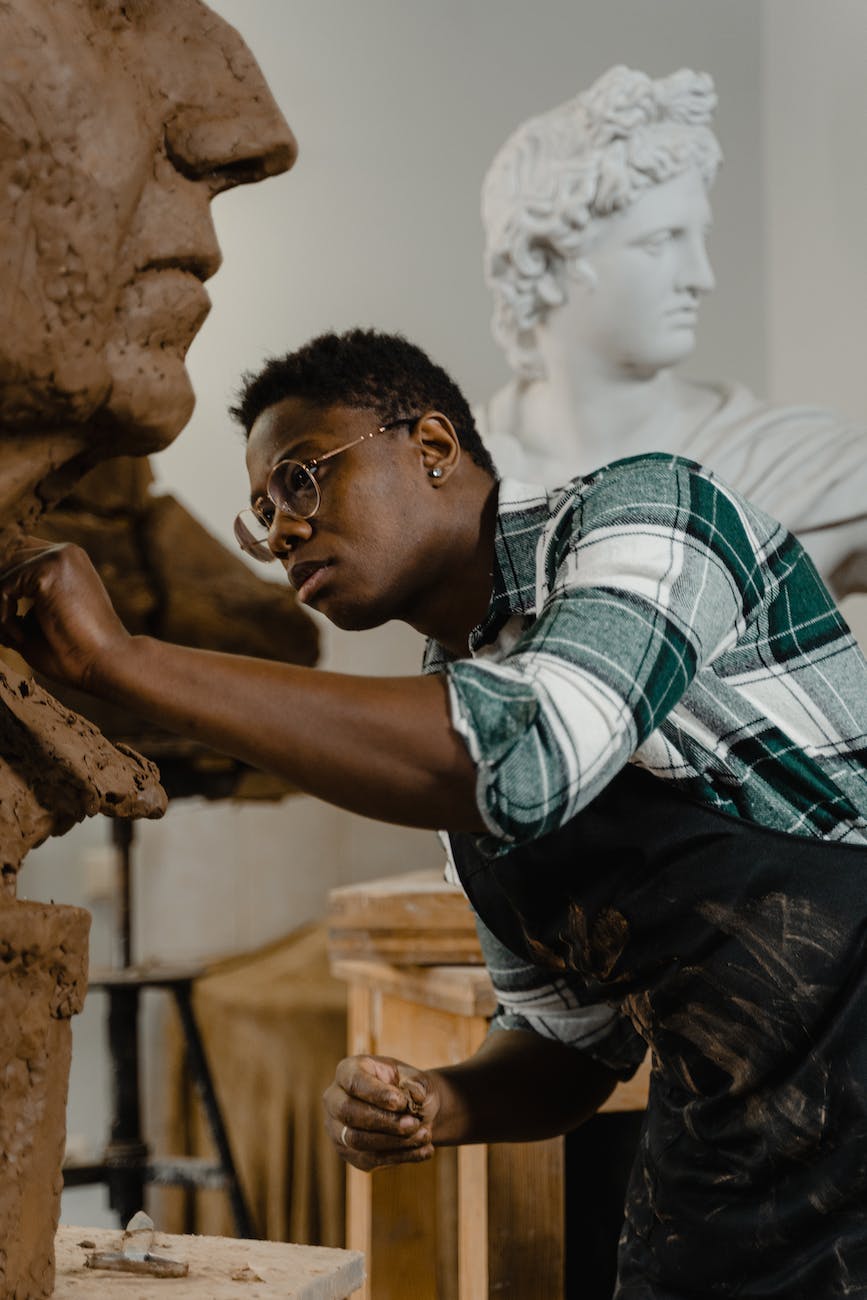Mastering Sculpture: Essential Skills to Elevate Your Craft
Sculpting is a multifaceted art form that requires consistent practice and refinement of key skills. Mastering fundamental techniques allows artists to expand their capabilities and produce more advanced, professional-grade sculptures. This article explores core competencies vital for taking one’s sculpting expertise to the next level.
Understanding Sculpting Materials
A sculptor’s mastery begins with an intimate understanding of the properties and behaviors of various media. Taking time to test and experiment with different materials is essential.
Clays
- Each clay type has unique plasticity, drying time and working characteristics. Learn how it responds to your tools.
- Pay attention to firing temperatures and processes for polymer, earthenware, stoneware and porcelain clays.
- Consider clays with grog or additive inclusions for different textures.
Waxes
- Work with sculpting, casting and encaustic waxes to explore their malleability, melting points and memory.
- Take note of how smoothly or texturally different waxes blend and take sculpting tools.
- Use the right wax for the job – sculpting vs moldmaking vs casting.
Plaster
- Mix plaster properly so it sets smooth and strong. Test set times.
- Build up thickness gradually as plaster cures to prevent cracking.
- Consider reinforced plasters like Hydrocal for increased durability with large sculptures.
Wood
- Identify carving-friendly woods like bass, birch, tupelo and mahogany. Know their grains.
- Cut contours along the wood’s grain pattern and directionality to avoid splintering.
- Consider oil, wax and lacquer finishing methods.
Stone
- Start with readily available soft stones like soapstone, alabaster or limestone.
- Progress to marbles, then onyx, granite and tougher stones as skills advance.
- Each stone has vastly different cutting, abrasion and polishing characteristics.
Mastering Sculpting Tools
Expert use of the tools of the trade allows for greater precision, control and efficiency.
Modeling Tools
- Use metal and wooden modeling tools to refine forms. Develop a light yet confident touch.
- Gain precision with ribbon tools for detailing, cutting and smoothing clay surfaces.
- Use wire loop tools to access hard-to-reach areas for refinement.
Carving Tools
- Employ chisels and gouges using proper grips and hand positions.
- Make clean stop-cuts with a knife. Pare away thin layers.
- Apply rasps and rifflers to precisely shape and contour.
- Use calipers and dividers to maintain symmetry and proportions.
Finishing Tools
- Learn to apply files, abrasives and sandpapers. Know grit sizes and uses.
- Burnish clay and wax with proper hand pressure and metal tools.
- Control airbrushes, small blowtorches and other effects tools.
Core Sculpting Techniques
Applying fundamental sculpting techniques allows artists to create more convincing, professional forms.
Shaping Figures
- Use armatures and maquettes to establish dynamic, proportional forms.
- Block in major masses first. Refine anatomy, facial features and details after.
- Employ calipers, proportional dividers and plumb lines for accuracy.
Texturing Surfaces
- Replicate cloth, hair, feathers, scales and other textures with varied tools.
- Incise patterns into clay or wax to emulate textures.
- Press actual fabrics or objects into surfaces to impart texture.
Joining Parts
- Score surfaces and apply slip to bond clay pieces. Use epoxy for other materials.
- Insert armature wires into drilled holes to attach clay parts.
- Register molds properly to combine multipart sculptures.
Moldmaking
- Create simple molds from clay slabs or plaster gauze.
- Use one or two-part silicone for detailed molds.
- Explore waste molds by sculpting over forms.
Developing an Artistic Eye
Beyond technical skills, sculptors must train their artistic eye to capture shape, form and detail.
- Study human and animal anatomy from life and reference photos.
- Compose forms to be interesting from multiple angles. Walk around them.
- Refine gestures, negative spaces and planes to create visual interest.
- Know when to exaggerate or simplify forms for maximum stylistic impact.
- Recognize when a sculpture feels complete and ready vs needing more refinement.
Perfecting Professional Habits
Success in sculpture requires nurturing dedicated work habits:
- Maintain a clean, organized, inspiring studio workspace.
- Care for tools properly. Invest in quality replacements when needed.
- Catalog and document works in progress. Photograph finished pieces.
- Handle materials safely. Use appropriate protection and ventilation.
- Continue learning. Refine techniques through classes, books, online tutorials.
With commitment to expanding skills, knowledge and work ethic, sculptors can elevate their craft to produce impressive, professional-caliber artwork.
